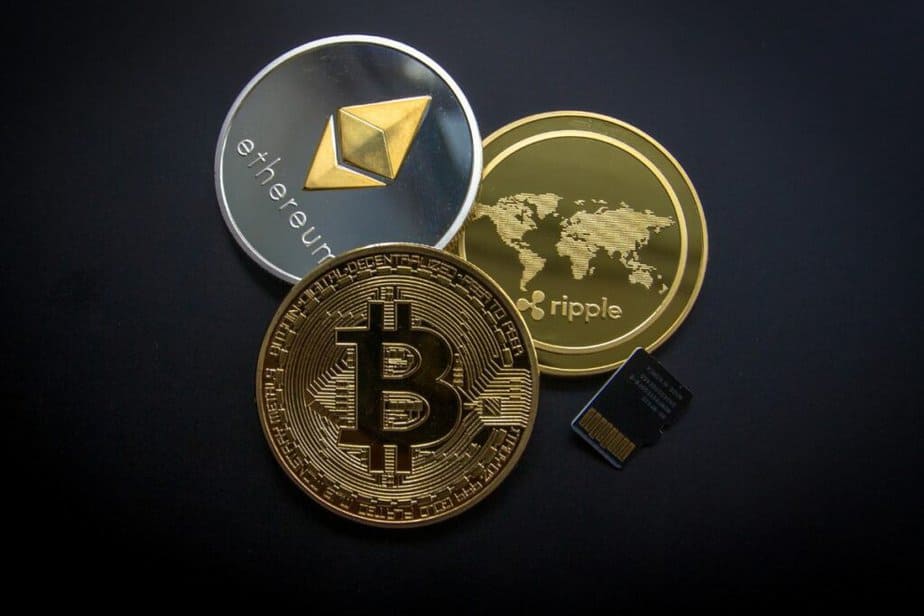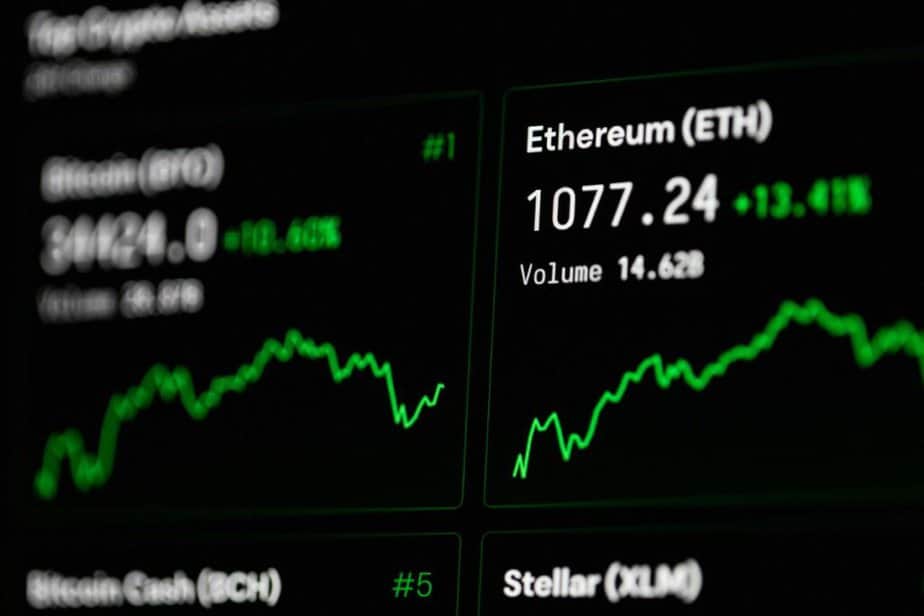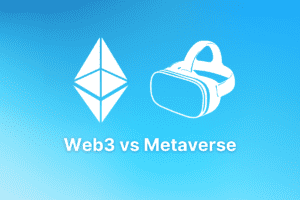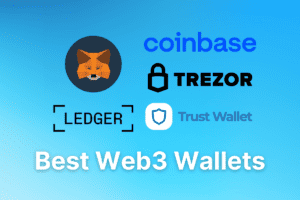What is Gwei? (A Complete Guide to How It Works)
We’re reader-supported; we may earn a commission from links in this article.
Gwei pronounced like “gweh” [gwɛ:], is a cryptocurrency unit of measurement you may have heard used in the digital currency space but not understood.
This blog post explains what Gwei is, why it’s essential, and how people use it in their digital asset strategy.
This knowledge can be helpful if you are an investor looking to diversify your portfolio or want to understand the finer points associated with cryptocurrencies and tokenomics.
So stick around and keep reading to learn all about Gwei!
What is Gwei?

Gwei (or gwei) is the Ethereum-specific denomination for a small fraction of Ether, the native cryptocurrency associated with the Ethereum network.
Gwei is commonly known as Wei, the smallest unit of Ether, used in transactions when trading and exchanging Ether or other Ethereum-based tokens.
A single ETH can be divided down into one quintillion units known as Gwei, meaning there are 1,000,000,000,000,000,000 Gwei per ETH.
Use our Gwei calculator to understand the conversion better.
When transacting on an Ethereum blockchain, it will use “gas” to ensure that all operations are completed successfully within your smart contract, contracts, or decentralized applications (dApps).
This is called gas, costs money, and must be paid in Gwei.
Why is Gwei essential in the Ethereum network?
Gwei is essential for the Ethereum network because it acts as a unit of measurement for the gas price, which is used to pay miners for processing transactions on the Ethereum blockchain.
This ensures the system remains secure and incentivizes miners to process transactions quickly and reliably.
Furthermore, Gwei allows users to customize their transaction fees according to how quickly they want their transactions processed: higher prices result in faster confirmations, while lower costs mean they will need to wait a bit longer.
How does Gwei work within the Ethereum network?

The Ethereum network uses a “gas” system that requires users to pay Gwei as a fee for each transaction they make.
The amount of Gwei fee required depends on the size and complexity of the transaction, but the gas fee typically ranges from 0.1-2 Gwei per operation.
This ensures that miners are compensated for their work and incentivizes them to process transactions quickly.
When sending ETH or other ERC20 tokens, users can specify how much gas they want to use and how much gas limit how much Gwei they are willing to pay in fees; this allows them to customize their experience based on the urgency of their transactions.
Different Types of Gwei Available on the Ethereum network
Currently, three types of Gwei are available on the Ethereum network: Wei, Kwei, and Mwei. Each of these represents a different level of precision when dealing with Gwei payments. Here is a breakdown of each type one get:
• Wei (1 wei = 0.0000000001 ETH)
• Kwei (1 kwei = 0.0001 ETH)
• Mwei (1 mwei = 0.001 ETH)
By utilizing the different types of Gwei available on the Ethereum network, users can be more precise when setting fees for their transactions.
This allows them to cut down on gas costs while still ensuring that their transactions are processed quickly and securely.
How to buy, sell, and trade Gwei?
Gwei is a unit of measurement that isn’t available to be bought or sold on crypto exchanges. Instead, it can only be earned using the Ethereum network and paying transaction fees in Gwei.
However, you can trade and exchange ETH for other tokens, often requiring specific amounts of Gwei as part of the transaction fee.
You can also use decentralized finance (DeFi) platforms like Uniswap to swap between different ERC20 tokens without paying any base fee or Gwei.
Advantages of using Gwei
There are advantages to using Gwei in the Ethereum network. I cover them in more detail here:

1. Low Transaction Fees
Gwei is a minimal and granular unit of measurement, allowing users to pay precise amounts for their transactions.
This means they can save on gas costs while ensuring their transactions are processed quickly and securely.
2. Better Efficiency
By utilizing the different types of Gwei available on the Ethereum network, users can be more precise when using gas prices and setting fees for their transactions.
This allows them to ensure they’re always paying the optimal total fee for gas so they don’t waste any money or time waiting for slow confirmations.
3. Increased Security
Using Gwei as part of your transaction fees can help ensure miners have enough incentive to process your transactions quickly and reliably.
This helps keep the Ethereum network secure and stable.
Disadvantages of using Gwei
While there may be advantages to using Gwei within the Ethereum network, there are also some disadvantages to it. I cover these in more detail below:
1. Limited Availability
Gwei cannot be bought or sold on crypto exchanges, so it can only be earned by using the Ethereum network and paying transaction fees in Gwei.
2. Volatility
The dollar value of Gwei can change significantly over time depending on the demand for gas units, which means you could end up paying more than you bargained for if you’re not careful.
This is especially prevalent during gas wars, where gas prices can shoot up really high when the public sale of a popular NFT goes live.
3. Risk of Underpayment
If users don’t pay enough Gwei for their transactions, miners may decide to keep network fees or prioritize other transactions with higher prices. This could lead to long confirmation times or even failed transactions.
Overall, Gwei is an essential part of the Ethereum network that provides users with an easy way to pay for their transactions.
Conclusion
Gwei is a handy measurement unit when dealing with Ethereum network transactions.
Gwei allows users to pay precise amounts for their transactions, helping them save money while ensuring that their transactions are processed quickly and securely.
With Gwei’s low transaction fees, increased efficiency, and improved security, Gwei can significantly maximize your returns using the Ethereum network.
FAQs
How do I buy Gwei?
Gwei cannot be bought or sold on crypto exchanges. Instead, it and the cryptocurrency ether can only be earned using the Ethereum network and paying transaction fees in Gwei.
Are there any downsides to using Gwei?
Yes, there are some downsides to using Gwei.
These include limited availability (as it cannot be bought or sold on crypto exchanges), volatility (as its value can change significantly over time), and the risk of underpayment (which may lead to long confirmation times or even failed transactions).
What is Gwei used for?
Gwei is primarily used to pay transaction fees on the Ethereum network.
It is a minimal and granular unit of measurement, allowing users to pay precise amounts for their Ethereum transactions while ensuring that they are processed quickly and securely.
Gwei can also be used in decentralized finance (DeFi) platforms like Uniswap to swap between different ERC20 tokens without paying any more Gwei.

Justin Chia
Justin is the author of Justjooz and is a data analyst and AI expert. He is also a Nanyang Technological University (NTU) alumni, majoring in Biological Sciences.
He regularly posts AI and analytics content on LinkedIn, and writes a weekly newsletter, The Juicer, on AI, analytics, tech, and personal development.
To unwind, Justin enjoys gaming and reading.





